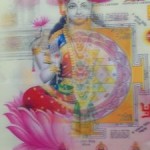“To be a knower of Sri Vidya one should be grounded in the Trika; to be a knower of the Trika one should be immersed in the Saiva Siddhanta; to understand Saiva Siddhanta one should be rooted in Samkhya.”
Shudranath
A friend asked me recently if I would provide her with a select bibliography for the SriVidya tradition. Approaching tantric traditions such as SriVidya as an “outsider” can be a daunting challenge, particularly if you don’t have access to practitioner communities or networks. But trying to organise even a basic “reading list” can be equally daunting, if only because SriVidya, as with most other South Asian religious currents, is heavily influenced by other traditions (tantric and otherwise). The epigraph above illustrates this, albeit tersely – that Sri Vidya, in its development, drew on many themes and concepts from the Trika traditions of Kashmir (a.k.a Kashmir Shaivism) and these in turn, require some understanding of the wider Saiva Siddhanta tradition – which was, in turn, heavily influenced by Samkhya philosophy.
This is one of the difficulties of getting to grips with tantra – there has been tendency has been to treat it as something entirely abstracted and seperate from the broader Indian cultural landscape rather than, as contemporary scholarship tends to view it – as the “esoteric wing” of wider Indian traditions (be they Buddhist, Jaina, Śaiva, Śhakta, Viṣṇu, etc.). Tantra also builds on historically earlier traditions (such as Classical Samkhya) but re-interprets them in novel ways.
So here’s a starting point – it is not intended to be comprehensive, and I’ll try and return to it periodically with updates. For the moment, I’m going to focus on scholarly works in English. Continue reading »

